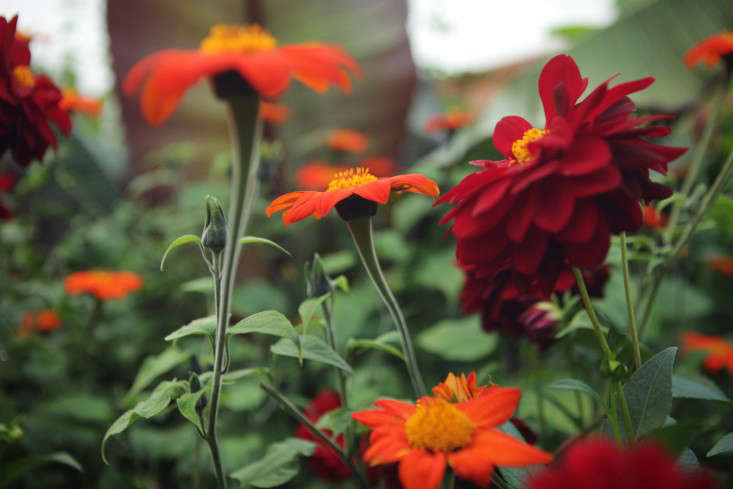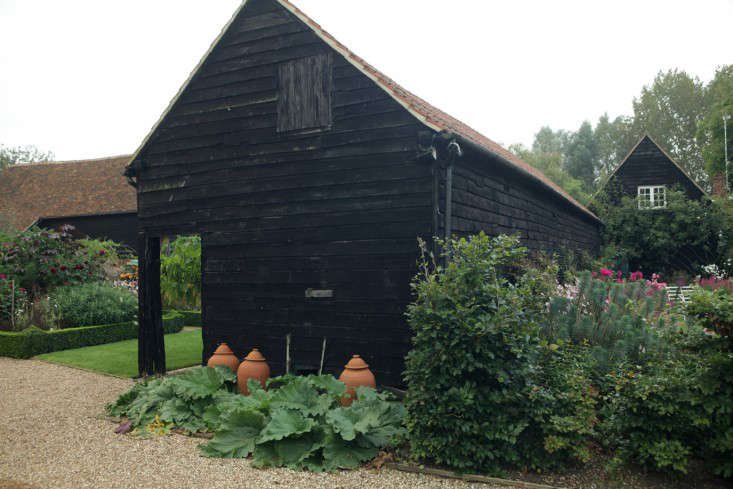Having trouble adjusting to the Autumn Equinox? This eight-acre English garden in Essex makes the seasonal transition rather effortlessly. Or at least that’s the effect intended by Ulting Wick’s tireless owner Philippa Burrough.
Photography by Jim Powell for Gardenista.

Above: Ulting Wick’s garden is arranged around an assortment of black barns. Rambling rose ‘Goldfinch’, seen here on the right, arches around the entrance to the heart of the garden: a densely planted parterre. The Goldfinch rose, from Peter Beales, has played proud host to a nest of goldfinches.

Above: A circle of grasses (Stipa tenuissima), salvia (s. leucanthra ‘Purple Velvet’ and ipomea ‘Lime Green’ ranging around a young Eucalyptus gunnii ‘Silverdrop’ form the center of the parterre. They are all suited to growing in this dry part of eastern England.
(More dry planting ideas from Essex can be found here: Required Reading: Beth Chatto’s 5 Favorite Flowers For a Gravel Garden).

Above: The fiery hues of tithonia ‘Torch’ and dahlia ‘Arabian Night’ against a backdrop of oversized canna leaves. The center of each of the boxed beds in this area is dominated by a canna and Ricinnus communis, or castor oil plant. They give a different height and texture from your typical English herbaceous display.

Above: The purple-mauve-red part of the color wheel is represented by spiky Salvia farinacea ‘Evolution’, Verbena bonariensis, and morning glory ‘Knoila’s Black’.

Above: The garden is open six times a year for charity. On the other side of this open barn, a trestle table and chairs provide a place for tea and cake consumption, an integral part of garden visiting. Shown here: rhubarb and terra cotta forcers, for stuffing with straw and encouraging very early red stalks.

Above: Spotty crimson borlotti beans sing out among the yellowing wigwams of beans and pumpkins.

Above: Who says asparagus takes up too much space? Not when it looks this good, shown here from rabbit level. At human height, the feathery foliage is accented with red seed pods that resemble peppercorns.

Above: Dahlia ‘Bishop of Auckland’, v.bonariensis, and yellow Mirablis jalapa. Dahlias and sunflowers in this garden are firmly tied with hazel poles and twine.

Above: The sharp edges of the box parterre coolly contain an eruption of the hot and fiery.
Above: For more information about Ulting Wick (and dates when it is open to the public), see Ulting Wick.
Designing an English cottage garden? For inspiration, see all our Brit Style gardens. One of our all-time favorites is Derek Jarman’s Prospect Cottage at Dungeness.








Have a Question or Comment About This Post?
Join the conversation